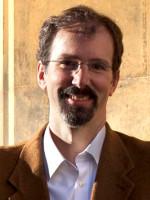
Professor of Biophysics
Our research
In the last 15 years our research has been focused on the development of methods of characterising the structure, dynamics and interactions of proteins in previously inaccessible states. These methods are based on the use of experimental data, in particular from nuclear magnetic resonance spectroscopy, as structural restraints in molecular dynamics simulations. Through this approach it is possible to obtain information about a variety of protein conformations, as for example those populated during the folding process, and about protein interactions in complex environments, including those generating aggregate species that are associated with neurodegenerative disorders such as Alzheimer's and Parkinson's diseases.
Application to neurodegenerative diseases
More recently, these studies have led us to investigate the physico-chemical principles of proteins homeostasis and their application to the development of therapeutic strategies against neurodegenerative diseases. Starting from the observation that proteins are expressed in the cell at levels close to their solubility limits, we are developing approaches to prevent or delay misfolding disorders based on the enhancement of our quality control mechanisms against protein aggregation.
Watch Professor Vendruscolo discuss his research
Take a tour of the Una Finlay Laboratory in the Centre for Misfolding Diseases
Publications
- <
- 72 of 82
